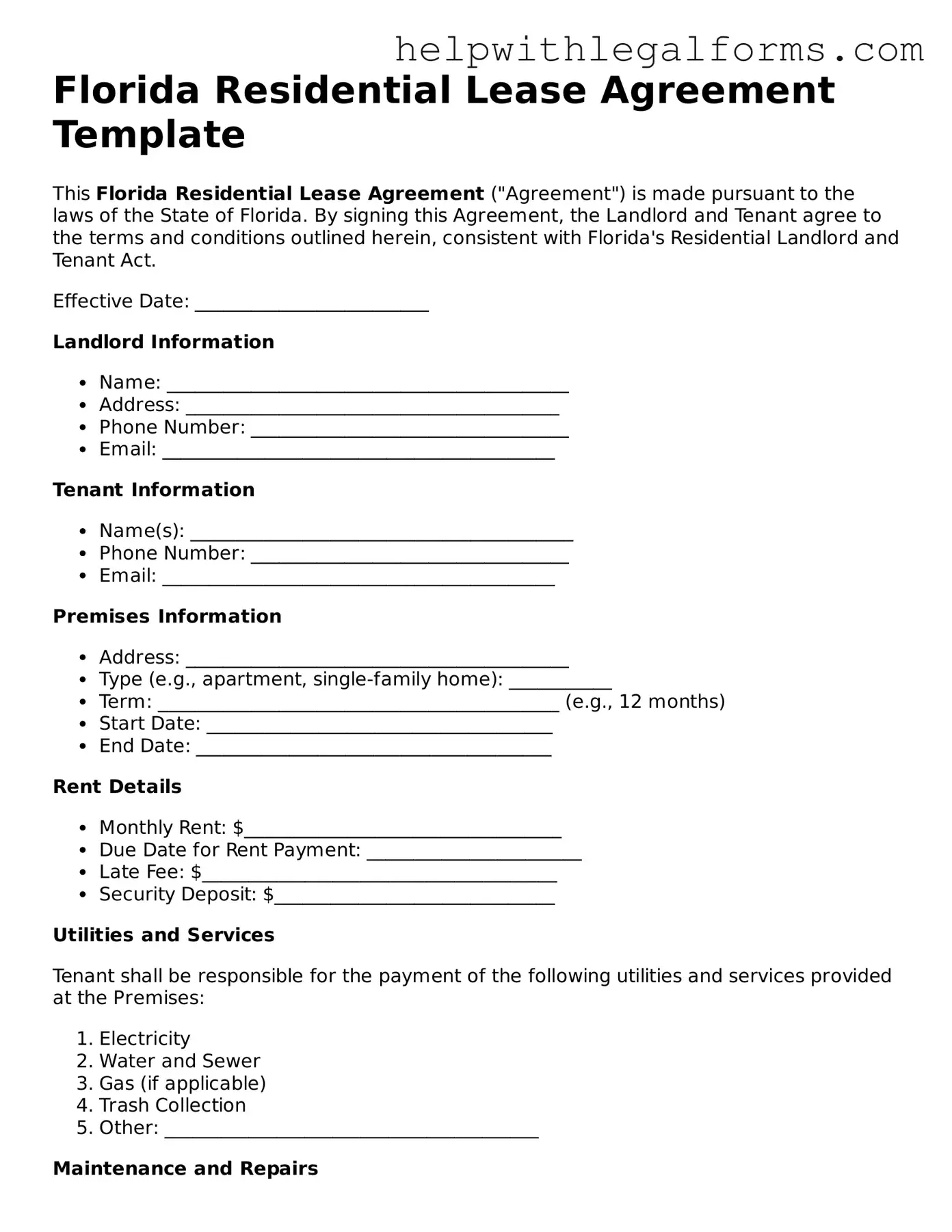Florida Residential Lease Agreement Template
This Florida Residential Lease Agreement ("Agreement") is made pursuant to the laws of the State of Florida. By signing this Agreement, the Landlord and Tenant agree to the terms and conditions outlined herein, consistent with Florida's Residential Landlord and Tenant Act.
Effective Date: _________________________
Landlord Information
- Name: ___________________________________________
- Address: ________________________________________
- Phone Number: __________________________________
- Email: __________________________________________
Tenant Information
- Name(s): _________________________________________
- Phone Number: __________________________________
- Email: __________________________________________
Premises Information
- Address: _________________________________________
- Type (e.g., apartment, single-family home): ___________
- Term: ___________________________________________ (e.g., 12 months)
- Start Date: _____________________________________
- End Date: ______________________________________
Rent Details
- Monthly Rent: $__________________________________
- Due Date for Rent Payment: _______________________
- Late Fee: $______________________________________
- Security Deposit: $______________________________
Utilities and Services
Tenant shall be responsible for the payment of the following utilities and services provided at the Premises:
- Electricity
- Water and Sewer
- Gas (if applicable)
- Trash Collection
- Other: ________________________________________
Maintenance and Repairs
Tenant agrees to keep the leased premise in a clean and sanitary condition and to promptly notify the Landlord of any repairs required that are the Landlord's responsibility under Florida law.
Modification of Agreement
No modification of this Agreement shall be considered valid unless agreed upon in writing by both Tenant and Landlord.
Governing Law
This Agreement shall be governed, interpreted, and enforced in accordance with the laws of the State of Florida.
Signatures
The Parties affirm that they have read and understand this Agreement and hereby sign as follows:
Landlord Signature: ______________________________ Date: ___________
Tenant Signature(s): ______________________________ Date: ___________
